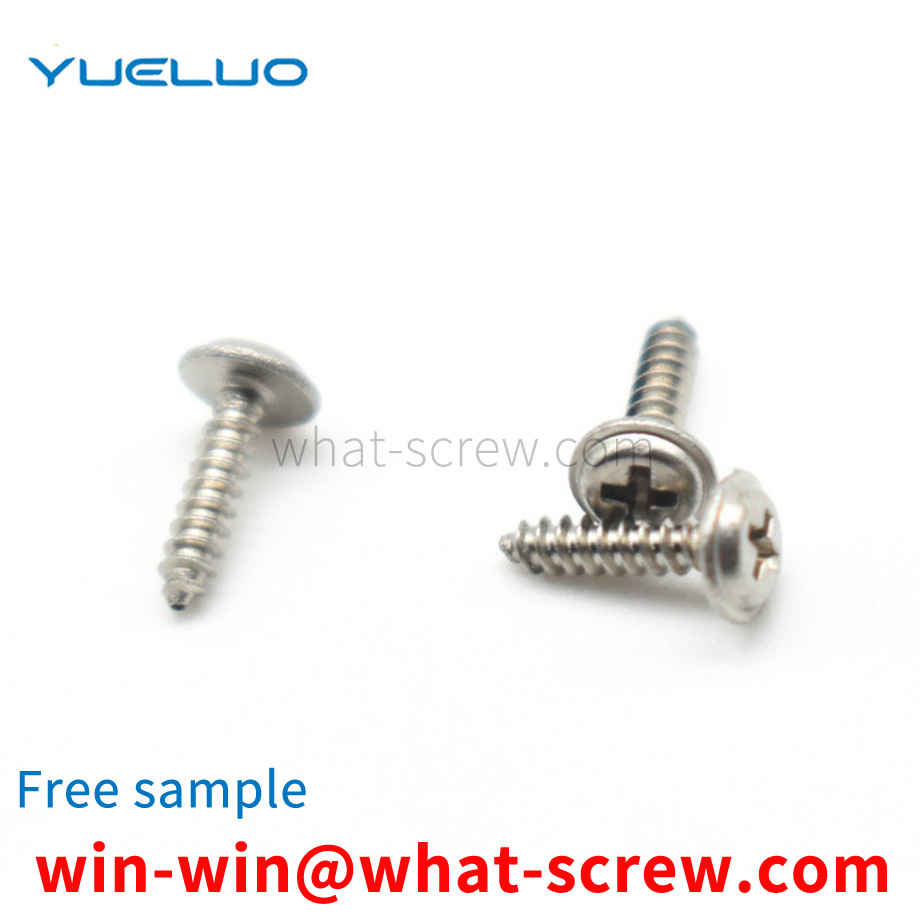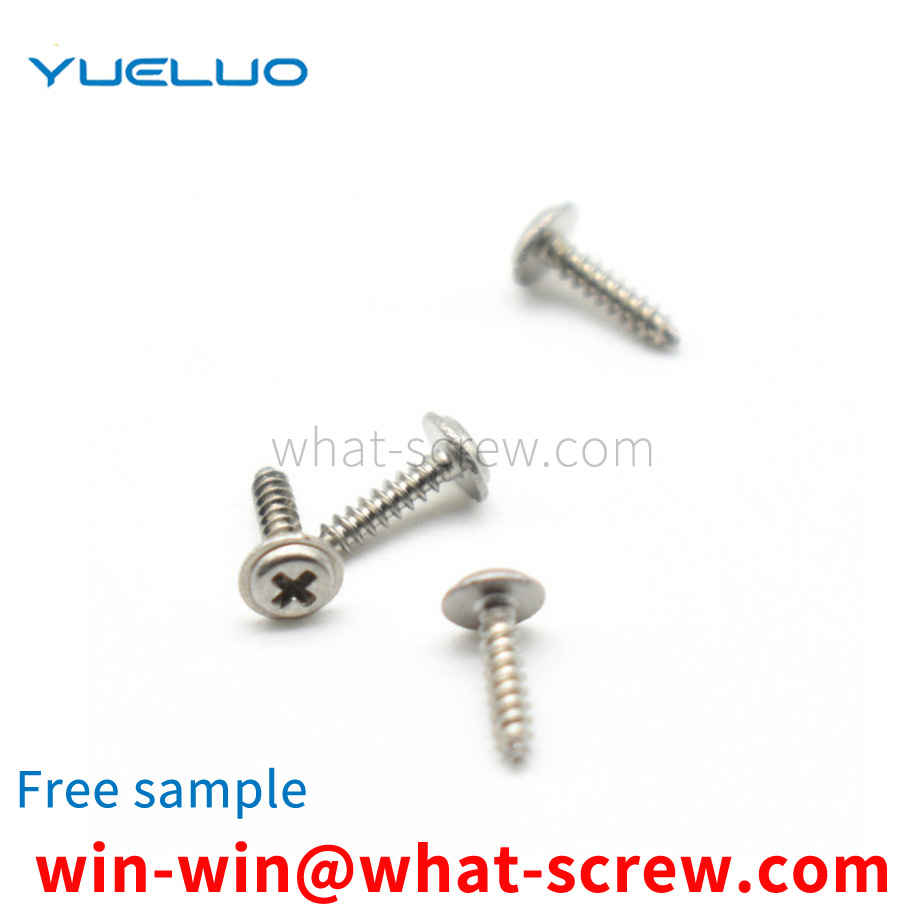As my digital TV technology becomes more and more mature, more and more people with digital-to-analog signal conversion function enter people's lives. Therefore, the number of production and processing is also increasing day by day. There are many requirements for the form, reliability and cost of PCB fixing screws in production. One of the existing fixing methods is to fix by means of bolts and nuts. The operation steps are to place the PCB board on the inner threaded copper column connected to the casing, and pass through the bolts with fine teeth. Screw holes on the PCB board, and then fix them on the copper posts with nuts. The connection method of this solution is reliable, but its manufacturing cost is high, and the copper column and the metal shell need to be screwed together, resulting in low production efficiency and high cost. In addition, there is also a common way that the PCB is supported by a plastic column, and the self-tapping screw is passed through the screw hole on the PCB board, and the PCB board and the metal bottom shell are connected by the self-tapping thread on the screw. The main disadvantage of this solution is that after the screw is fixed on the metal shell, the screw head is exposed at the bottom of the machine. If the user is not careful during use, the hand scratching phenomenon will occur, which will bring changes and harm to the user's use. . And when the machine slides on the desktop, if the screw head is too exposed, it will scratch the desktop. Therefore, how to provide a PCB fixing method with convenient operation, reliable connection and low production cost is a technical problem to be solved urgently in the industry.
Bolt: A type of fastener consisting of a head and a screw (a cylinder with an external thread), which needs to be matched with a nut to fasten and connect two parts with through holes. This form of connection is called a bolted connection. If the nut is unscrewed from the bolt, the two parts can be separated, so the bolt connection is a detachable connection. [1] Stud: A type of fastener that has no head and only has external threads on both ends. When connecting, one end of it must be screwed into the part with the internal threaded hole, the other end must pass through the part with the through hole, and then the nut must be screwed on, even if the two parts are tightly connected as a whole. This form of connection is called a stud connection, which is also a detachable connection. It is mainly used for occasions where one of the connected parts is thick, requires a compact structure, or is not suitable for bolt connection due to frequent disassembly. [1] Screw: It is also a type of fastener consisting of a head and a screw. It can be divided into three categories according to the purpose: machine screws, set screws and special-purpose screws. Machine screws are mainly used for a fastened connection between a part with a fixed threaded hole and a part with a through hole, without the need for nut matching (this connection form is called screw connection, which is also a detachable connection; it can also be Cooperate with the nut, it is used for the fast connection between two parts with through holes.) The set screw is mainly used to fix the relative position between the two parts. Special purpose screws, such as eyebolts, are used for hoisting parts. [1] Nuts: with internal threaded holes, generally in the shape of a flat hexagonal column, but also in a flat square column or flat cylindrical shape, with bolts, studs or machine screws, used to fasten and connect two parts, make it a whole. [1] 5. Self-tapping screw: Similar to machine screw, but the thread on the screw is a special thread for self-tapping screw. It is used to fasten and connect two thin metal components to make them a whole. Small holes need to be made in advance on the components. Due to the high hardness of this kind of screw, it can be directly screwed into the hole of the component, so that the Forming a corresponding internal thread [1] 6. Wood screw: It is also similar to a machine screw, but the thread on the screw is a special thread for wood screws, which can be directly screwed into wooden components (or parts) to connect a band through The metal (or non-metallic) part of the hole is fastened to a wooden member. This connection is also a detachable connection. [1] 7. Washers: A type of fastener with an oblate annular shape. It is placed between the supporting surface of the bolt, screw or nut and the surface of the connecting part, which increases the contact surface area of the connected parts, reduces the pressure per unit area and protects the surface of the connected parts from damage; another type of elastic washer, It can also play a role in preventing the nut from loosening. [1] 8. Retaining ring: It is installed in the shaft groove or shaft hole groove of the machine and equipment, and plays the role of preventing the parts on the shaft or the hole from moving left and right. [1] 9. Pins: mainly used for positioning the left and right parts, and some are also used for connecting parts, fixing parts, transmitting power or locking fasteners. [1] 10. Rivet: A type of fastener consisting of a head and a shank, which is used to fasten and connect two parts (or components) with holes to make them a whole. This form of connection is called rivet connection, or riveting for short. It is a non-removable link. Because if the two parts joined together are separated, the rivets on the parts must be broken. [1] 11. Components and connection pairs: Assemblies are a type of fasteners supplied in combination, such as a combination of a certain machine screw (or bolt, self-supplied screw) and a flat washer (or spring washer, lock washer); Connection pair refers to a type of fastener that is supplied by a combination of special bolts, nuts and washers, such as high-strength hexagon head bolt connection pairs for steel structures. [1] 12. Welding nail: a heterogeneous fastener composed of a nail rod and a nail head (or no nail head), which is fixed to a part (or component) by welding, so as to be connected with other parts. .
The assembly of hollow rivets and flat head screws riveted on the cover plate is assembled in the product. Compared with the method of connecting with bolts, the loading and unloading speed can improve the efficiency by about 80% to 90%, and is widely used. The assembly needs to riveted hollow rivets and flat head screws on the cover plate, and ensure that the riveted flat head screws can rotate flexibly. When riveting, it is necessary to use special tools to riveted the hollow rivets, flat head screws and cover plates together for riveting. In the existing riveting process, the oval head screw is often damaged due to the action of external force. The positioning process is cumbersome and the work efficiency is low.
The spring washer usually includes a washer body and a raised claw head punched and formed on the washer body. The spring washer is often placed between the bolt head of the bolt and the connected parts, wherein the raised claw head is connected to the part to be connected. The surfaces of the connecting parts are in contact, and the plane on the gasket body, opposite to the lifting direction of the raised claw head, is in contact with the bolt head. After the bolt head is tightened, the elastic reaction force generated by the raised claw head after flattening makes the The screwed threads are pressed tightly, and at the same time, the raised claw head is pressed against the bolt head and the supporting surface of the connected parts, which has the effect of preventing loosening. However, the traditional spring washer is a single-claw type. When tightening, the raised claw head will cause great damage to the surface of the connected parts, so it is not suitable for the anti-loosening treatment of parts with small surface hardness.
The head of the traditional screw is located outside the threaded hole and occupies a large space, which is not suitable for occasions with small space, nor is it suitable for occasions where the outer surface of the component is a working surface. For example, in the field of electronic products, or when connecting the shaft and the shaft sleeve, the machine screw with a fully threaded structure on the outer surface is widely used.
We have many years of experience in the production and sales of screws, nuts, flat washers, etc. The main products are: carbon steel galvanized hexagon nuts, internal and external multi-tooth gaskets, positioning PIN pins, tapping expansion bolts and other products, we can provide you with suitable products Your fastener solution.



















 Service Hotline
Service Hotline




